Month: July 2021
Villa, Pershing, The Texas Rangers, And An American Invasion
How Viruses Could Cure Cancer and Save Lives
Nathanial Scharping in Discover:
 Sitting in an isolated room at Beth Israel Deaconess Medical Center in Boston, Frank Nielsen steeled himself for the first injection. Doctors were about to take a needle filled with herpes simplex virus, the strain responsible for cold sores, and plunge it directly into his scalp. If all went well, it would likely save his life. Nielsen was a cancer survivor and, once again, a cancer patient. His melanoma, which had responded to conventional treatments the first time around, had returned with a frightening aggressiveness. Within weeks, a lump on his scalp had swelled into an ugly mass. Unlike the first time, options like surgery weren’t viable — it was growing too quickly.
Sitting in an isolated room at Beth Israel Deaconess Medical Center in Boston, Frank Nielsen steeled himself for the first injection. Doctors were about to take a needle filled with herpes simplex virus, the strain responsible for cold sores, and plunge it directly into his scalp. If all went well, it would likely save his life. Nielsen was a cancer survivor and, once again, a cancer patient. His melanoma, which had responded to conventional treatments the first time around, had returned with a frightening aggressiveness. Within weeks, a lump on his scalp had swelled into an ugly mass. Unlike the first time, options like surgery weren’t viable — it was growing too quickly.
As a last resort, his doctors turned to a cutting-edge drug known as T-VEC, approved in 2015 in the U.S. But the treatment, part of a promising field of cancer care known as immunotherapy, doesn’t sound much like a drug at all. T-VEC consists of a genetically modified virus that acts as both soldier and scout within the body, attacking tumor cells directly and calling in reinforcements from the immune system. Nielsen’s doctors hoped it would team up with the immunotherapy drug Keytruda, which enables the immune system to recognize and destroy tumor cells, to bring his cancer under control.
For nearly a year, Nielsen, a mechanical engineer in central Massachusetts, traveled to Boston every three weeks to have the drug injected into the tumors on his scalp. He would come home with his head swaddled in bloody bandages, aching after as many as 70 separate injections in a single session. There, he would prepare himself for the inevitable fever, nausea and vomiting, as his body reacted to the sudden presence of a live virus.
But the grueling regimen paid off. After the fifth round of treatment, Nielsen says, he began to see a visible change in the lumps on his scalp.
More here.
Saturday Poem
Where
You hear one degree. You hear Fahrenheit.
You hear warm weather in your hometown
And leave before the local news switches: they
Say half a degree, say Celsius, say warming
Global climate, so beeswax melts
Out your ear as it ships
Past the Sirens atop bones with plastic
Six pack yokes around them still choking
Those in rigor mortis. You hear them
As one hurricane siren—not constant, plural
Puddles feet deep of human waste smacking
Against Achilles—and chase them. As it turns out,
At half a degree warmer, all of you go
From underwater Otoh Gunga, Sub Diego, and Atlantis
To Upper and Lower Keys, Atlantic and Ocean City:
You go closer from myth to thawed
Greenland; deep-frozen heat in the sky
With smog and lung with tumor tips car
Exhaust pipes, blocking your airways
Yet trafficking cough drop
Needs; the soil’s dry spots a caught black sea bass,
Flat as a skate: you could skate on drought
To the North Pole and fall
Into the Arctic Ocean, devoid of any ice.
Algae moves out, breaks up with coral,
Who then bleaches their skin and dies,
The hottest day on record breaking
Its own record every two years until
Heat strokes are common colds
Nobody’s immune to, everywhere—
by Prince Bush
from Pank
_______
Cosby Walks
Rafia Zakaria in The Baffler:
 BILL COSBY IS FREE. He has been freed from the Pennsylvania prison where he was being held for the past three years and he has gone home, where undoubtedly he will be celebrating tonight. The story of how his conviction for the sexual assault of Andrea Constand was summarily overturned is also an argument for why #MeToo has been so centered on wielding cultural power: shaming and naming rather than the exhausting and unpromising pursuit of legal justice. The legal system as it currently exists is failing women who have been harassed and assaulted by powerful men, and Cosby’s overturned conviction tells a story of these failures.
BILL COSBY IS FREE. He has been freed from the Pennsylvania prison where he was being held for the past three years and he has gone home, where undoubtedly he will be celebrating tonight. The story of how his conviction for the sexual assault of Andrea Constand was summarily overturned is also an argument for why #MeToo has been so centered on wielding cultural power: shaming and naming rather than the exhausting and unpromising pursuit of legal justice. The legal system as it currently exists is failing women who have been harassed and assaulted by powerful men, and Cosby’s overturned conviction tells a story of these failures.
If there was ever an indictment of the legal system’s inability to provide women who are raped, harassed, and abused by men a clear roadmap to justice, here it is. If there ever was an argument to be made for “canceling” abusive, assaulting, raping men, shamed by society and ostracized by all, here it is. When the precise tools offered by the legal system, its collations of proof, its rules of verification and of admissibility, prove so horrifically ineffectual to meet the needs of women who seek punishment for the men who have sexually assaulted them, then the blunt instruments of cultural upheaval are necessary.
Negative publicity and organized ostracism are blunt tools; there is no independent judge, there are no trained lawyers, there is no hermetic courtroom where what is said and what is presented is strictly controlled. Instead, there is only rage and outrage, the frustrations of half the population that is just fed up with feeling constantly hunted, constantly preyed upon by the other half. Yes, not all men belong to this category, but because all men are not sufficiently interested in speaking up against some men or pointing out how systems of proof and prosecution are not pliant enough to meet the needs of prosecuting sexual crimes, they will have to confront the inexact revenge of cultural revolt.
More here.
Ahmad Saidullah interview
From The Artisanal Writer:
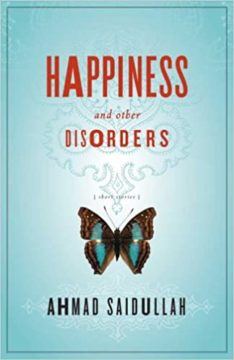
How did you conceive your first book?
I had a lot of free time to reflect and ‘fabulate’ when I was laid up in bed with a spinal injury. I wrote these linked stories — some remembered, some invented — in seven months. It took another three to edit them and send them out to literary awards and publishers. I was lucky with the reception.
I should mention the CBC Literary Award, Heather Birrell’s generous review in Quill & Quire when the book came out, and making the longlist of the Crossword Vodafone Award for global South Asian fiction and the finals of the Danuta Gleed Award.
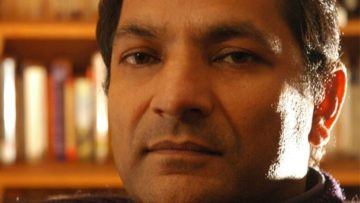
What memorable or formative experience around learning to write springs to mind?
Reading and thinking led to writing. There were all kinds of books at home. I spent quite a bit of time alone as I was often hospitalized when I was young. I remember James Baldwin’s Going to Meet the Man, but I didn’t get it all at that age. I was truly shaken when I re-read it later at Cambridge. Like many, I loathed V.S. Naipaul for his neo-colonial take on India.
More here.
Penn Jillette (Penn & Teller) Answers Magic Questions
Living Memory
Megan Pillow in Guernica:
 The first time I saw the Breonna Taylor memorial was on a livestream. It was summer of 2020, and I watched a small team of people at Injustice Square shake out tarps and cover the collection of paintings and signs to protect them from rain. The second time I saw it was in person. I walked around it, noticed the nameplates inscribed with the names of the other Black men and women killed by police encircling its edges. There was one painting of Taylor that was massive, vibrant; a sheen of purple glistened in her hair, and a small jewel glittered in her nose. At its base were poster boards proclaiming “Justice for Bre” and “She was asleep.” Around me, protestors shouted out some of those same lines through their masks.
The first time I saw the Breonna Taylor memorial was on a livestream. It was summer of 2020, and I watched a small team of people at Injustice Square shake out tarps and cover the collection of paintings and signs to protect them from rain. The second time I saw it was in person. I walked around it, noticed the nameplates inscribed with the names of the other Black men and women killed by police encircling its edges. There was one painting of Taylor that was massive, vibrant; a sheen of purple glistened in her hair, and a small jewel glittered in her nose. At its base were poster boards proclaiming “Justice for Bre” and “She was asleep.” Around me, protestors shouted out some of those same lines through their masks.
In Breonna Taylor’s city, which is also my city, protestors have gathered at Injustice Square regularly since May 28, 2020. Beginning just three days after George Floyd was murdered in Minneapolis, they occupied that small square of land. Through the summer of 2020 and into the fall, they showed up every day—even after another Louisville resident, beloved local chef and entrepreneur David McAtee, was gunned down by the National Guard just days after Floyd’s death and his body left in the street for hours. Every day, even through colder months that saw protest leaders Travis Nagdy and Kris Smith shot down in the street, becoming part of Louisville’s record 173 homicides last year.
After my second visit to the square, I felt haunted by a question I didn’t know how to ask. I worried that the ink on the posters would run in a hard rain, that people’s memories would degrade. Most of all, I was terrified that the police would attack the very people desperately fighting for justice and preserving Taylor’s memory. At a loss, I turned to Google and typed: How do we save everyone, everything?
A more generative question is this: How will we remember 2020? In the thick of the COVID-19 pandemic, as protests against racial injustice and police violence spread across the country, there was more than one Saturday night where I found myself Googling “pandemic archives.” Enraged and lonely and trying to make sense of why some stories are preserved and others are overlooked, I wanted to know what preservation work was already happening and, crucially, who was doing it. I wanted to know what stories and objects they deemed important enough to save, and what strategies, rationales, and systems they were using to capture them. What I found was a range of organizations attempting to chronicle a monumental and disastrous year while it was still underway.
In between a couple of links to archives of the flu pandemic of 1918 and a host of sites banking medical and scientific information about the virus were a number of crowdsourced projects, some localized, some international.
More here.
Scientists identify long-sought marker for COVID vaccine success
Ewen Callaway in Nature:
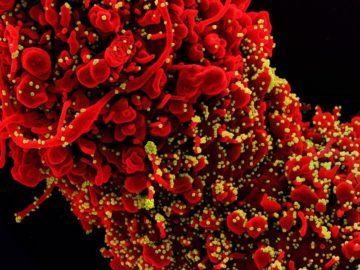 Researchers developing the Oxford–AstraZeneca COVID-19 vaccine have identified biomarkers that can help to predict whether someone will be protected by the jab they receive. The team at the University of Oxford, UK, identified a ‘correlate of protection’ from the immune responses of trial participants — the first found by any COVID-19 vaccine developer. Identifying such blood markers, scientists say, will improve existing vaccines and speed the development of new ones by reducing the need for costly large-scale efficacy trials.
Researchers developing the Oxford–AstraZeneca COVID-19 vaccine have identified biomarkers that can help to predict whether someone will be protected by the jab they receive. The team at the University of Oxford, UK, identified a ‘correlate of protection’ from the immune responses of trial participants — the first found by any COVID-19 vaccine developer. Identifying such blood markers, scientists say, will improve existing vaccines and speed the development of new ones by reducing the need for costly large-scale efficacy trials.
“We would like to have an antibody measure that is a reliable guide to protection because it could speed up the licensure of new vaccines,” says David Goldblatt, a vaccinologist at University College London. New formulations of influenza vaccines, for instance, are generally judged by whether they trigger a strong enough antibody response against a viral protein in a relatively small number of people, instead of in large trials that look for reductions in rates of infection. Researchers and regulators hope to do the same with COVID-19 vaccines.
“The power of a correlate in vaccines is profound,” says Dan Barouch, director of the Center for Virology and Vaccine Research at Beth Israel Deaconess Medical Center in Boston, Massachusetts. “If there’s a reliable correlate, then it can be used in clinical trials to make decisions as to what vaccines are likely to work, what form of vaccines are likely to work, or how durable the vaccines are going to be.”
More here.
The Late Devonian Extinction
https://www.youtube.com/watch?v=YruHXR-a9Zs
On Neuroaesthetics
Erik Morse at Artforum:
 “Neuroaesthetics can perhaps be understood in the Duchampian sense,” he claimed in a 2004 interview. “Neuroscience is a readymade, which is recontextualized out from its original context as a scientific-based paradigm into one that is aesthetically based.” He pointed to Conceptualists like Dan Graham and Sol LeWitt as precursors of a later generation of artists who would act as mediators between an increasingly technologized and monetized society and its hyperactive visual culture. Neuroaesthetics endeavored not to produce a synthesis of neuroscience and aesthetics, but rather to estrange the former from normal usage—much as Duchamp did the bicycle wheel and bottle rack—and reenvision in a more psychodynamic capacity its tools for mapping cognitive categories such as color, memory, and spatial relationships, in order to reveal, in Neidich’s words, “the idea of becoming brain.”
“Neuroaesthetics can perhaps be understood in the Duchampian sense,” he claimed in a 2004 interview. “Neuroscience is a readymade, which is recontextualized out from its original context as a scientific-based paradigm into one that is aesthetically based.” He pointed to Conceptualists like Dan Graham and Sol LeWitt as precursors of a later generation of artists who would act as mediators between an increasingly technologized and monetized society and its hyperactive visual culture. Neuroaesthetics endeavored not to produce a synthesis of neuroscience and aesthetics, but rather to estrange the former from normal usage—much as Duchamp did the bicycle wheel and bottle rack—and reenvision in a more psychodynamic capacity its tools for mapping cognitive categories such as color, memory, and spatial relationships, in order to reveal, in Neidich’s words, “the idea of becoming brain.”
Chaoid Gallery was an offshoot of artbrain.org and Journal of Neuroaesthetics, founded in 1996 by Neidich and artist Nathalie Anglès as a critical and curatorial project devoted to the dissemination of neuroaesthetic theory within media arts, a discipline then in its infancy.
more here.
Friday Poem
Toast
There was a woman in Ithaca
who cried softly all night
in the next room and helpless
I fell in love with her under the blanket
of snow that settled on all the roofs
of the town, filling up
every dark depression
Next morning
in the motel coffee shop
I studied the made-up faces
of women. Was it the middle-aged blond
who kidded the waitress
or the young brunette lifting
her cup like a toast?
Love, whoever you are,
your courage was my companion
for many cold towns
after the betrayal of Ithaca,
and when I order coffee
in a strange place, still
I say, lifting, this is for you.
by Leonard Nathan
from A Book of Luminous Things
Harvest Boks, Harcourt, Inc. 1996
Do We “Live By Bridges”?
Cynthia Haven at The Book Haven:
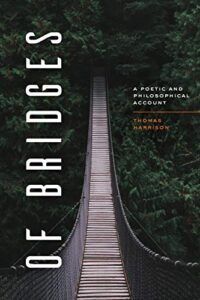 Bridges connect us – and they have since the beginning of time, all the way back to the very first bridge, the rainbow. They connect us geographically, strategically, metaphorically, lyrically (if that last seems a stretch, think of Simon and Garfunkel’s “Bridge Over Troubled Waters”). Now we have a book to explain all sorts of bridges to us, thanks to UCLA author Thomas Harrison, whose book Of Bridges: A Poetic and Philosophical Account, is just out with the University of Chicago Press.
Bridges connect us – and they have since the beginning of time, all the way back to the very first bridge, the rainbow. They connect us geographically, strategically, metaphorically, lyrically (if that last seems a stretch, think of Simon and Garfunkel’s “Bridge Over Troubled Waters”). Now we have a book to explain all sorts of bridges to us, thanks to UCLA author Thomas Harrison, whose book Of Bridges: A Poetic and Philosophical Account, is just out with the University of Chicago Press.
Harrison gave a May 28 Zoom presentation to launch On Bridges, with discussants Christy Wampole of Princeton and Stanford’s Marjorie Perloff. The Stanford literary critic had already weighed in on the book: “Of Bridges is a dazzling investigation into the profound semantic and historical resonance of the seemingly simple word bridge, that passage between two points that is unique in its material, metaphoric, and philosophical properties. Harrison has chapters on every possible aspect of bridging, for example, the musical bridge, the poetic bridge as in Hart Crane’s famous poem by that title, the actual historic bridges of Greece and Rome, and the ‘thought’ bridges of Nietzsche and Heidegger. Throughout, Harrison’s book is astonishingly learned, well written, and imaginative. Bridges will never be the same after this brilliant study.”
more here.
‘Languages of Truth: Essays 2003-2020’ by Salman Rushdie
Mukund Padmanabhan in The Hindu:
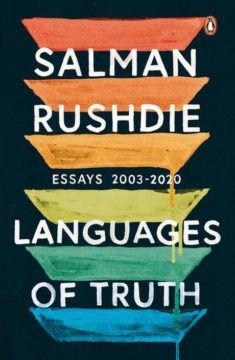 “What is the use of stories that aren’t even true?” Haroun asks his father in Salman Rushdie’s delightful and inexplicably underrated crossover novel. Rushdie suggests the issue it raises, the relationship between the “world of imagination and the so-called real world”, has occupied most of his writing life.
“What is the use of stories that aren’t even true?” Haroun asks his father in Salman Rushdie’s delightful and inexplicably underrated crossover novel. Rushdie suggests the issue it raises, the relationship between the “world of imagination and the so-called real world”, has occupied most of his writing life.
In Haroun.., the imaginative realm and its sea of stories win the allegorical battle over silence and censorship. In Languages of Truth, Rushdie takes the argument further, marshalling more than merely functional or utilitarian reasons, important though they are, to declare that the worlds of the real and imagined are inextricably twinned.
More here.
You Don’t Understand Neural Networks Until You Understand the Universal Approximation Theorem
Andre Ye in Analytics Vidhya:
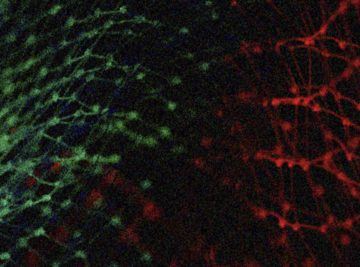 The Universal Approximation Theorem is, very literally, the theoretical foundation of why neural networks work. Put simply, it states that a neural network with one hidden layer containing a sufficient but finite number of neurons can approximate any continuous function to a reasonable accuracy, under certain conditions for activation functions (namely, that they must be sigmoid-like).
The Universal Approximation Theorem is, very literally, the theoretical foundation of why neural networks work. Put simply, it states that a neural network with one hidden layer containing a sufficient but finite number of neurons can approximate any continuous function to a reasonable accuracy, under certain conditions for activation functions (namely, that they must be sigmoid-like).
Formulated in 1989 by George Cybenko only for sigmoid activations and proven by Kurt Hornik in 1991 to apply to all activation functions (the architecture of the neural network, not the choice of function, was the driver behind performance), its discovery was a significant driver in spurring the excited development of neural networks into the plethora of applications in which they are used today.
Most importantly, however, the theorem is an eye-opening explanation of why neural networks appear to behave so intelligently. Understanding it is a key step in developing a strong and deep understanding of neural networks.
More here.
Romila Thapar: Voices of Dissent in Indian history and at present, with an introduction by Akeel Bilgrami
Amartya Sen on what British rule really did for India
Amartya Sen in The Guardian:
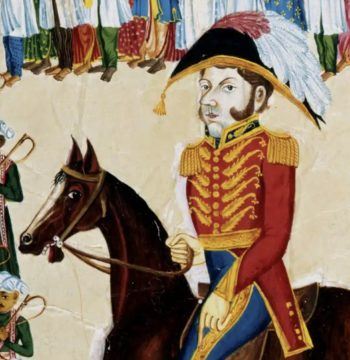 The British empire in India was in effect established at the Battle of Plassey on 23 June 1757. The battle was swift, beginning at dawn and ending close to sunset. It was a normal monsoon day, with occasional rain in the mango groves at the town of Plassey, which is between Calcutta, where the British were based, and Murshidabad, the capital of the kingdom of Bengal. It was in those mango groves that the British forces faced the Nawab Siraj-ud-Doula’s army and convincingly defeated it.
The British empire in India was in effect established at the Battle of Plassey on 23 June 1757. The battle was swift, beginning at dawn and ending close to sunset. It was a normal monsoon day, with occasional rain in the mango groves at the town of Plassey, which is between Calcutta, where the British were based, and Murshidabad, the capital of the kingdom of Bengal. It was in those mango groves that the British forces faced the Nawab Siraj-ud-Doula’s army and convincingly defeated it.
British rule ended nearly 200 years later with Jawaharlal Nehru’s famous speech on India’s “tryst with destiny” at midnight on 14 August 1947. Two hundred years is a long time. What did the British achieve in India, and what did they fail to accomplish?
During my days as a student at a progressive school in West Bengal in the 1940s, these questions came into our discussion constantly. They remain important even today, not least because the British empire is often invoked in discussions about successful global governance. It has also been invoked to try to persuade the US to acknowledge its role as the pre-eminent imperial power in the world today: “Should the United States seek to shed – or to shoulder – the imperial load it has inherited?” the historian Niall Ferguson has asked. It is certainly an interesting question, and Ferguson is right to argue that it cannot be answered without an understanding of how the British empire rose and fell – and what it managed to do.
More here.
The Inca
https://www.youtube.com/watch?v=F2spt7SELhw
The Femme Solidarity and Queer Allyship of Mädchen in Uniform
Amanda Lee Koe at The Current:
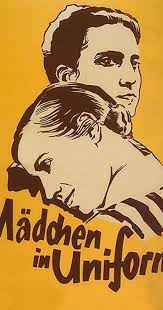 The first real lesbian kiss in a film is an honor that rightfully belongs to Mädchen in Uniform. It’s true that a year earlier, in 1930, Marlene Dietrich played a tux-clad chanteuse who snogs a woman in a nightclub audience in Morocco, but Dietrich has no further contact with this female extra, and the kiss is cynically if efficaciously played to the star’s male love interest, a legionnaire (Gary Cooper) who’s watching her saucy performance intently. Unlike in Morocco, there are no titillated men to be found in Mädchen in Uniform. It is the schoolgirls who are jacked and lusty, the schoolmarms who are patriarchal and tyrannical. The kiss, which takes place behind the closed doors of a dorm, isn’t about who’s performing for whom. It’s about what it feels like for a girl.
The first real lesbian kiss in a film is an honor that rightfully belongs to Mädchen in Uniform. It’s true that a year earlier, in 1930, Marlene Dietrich played a tux-clad chanteuse who snogs a woman in a nightclub audience in Morocco, but Dietrich has no further contact with this female extra, and the kiss is cynically if efficaciously played to the star’s male love interest, a legionnaire (Gary Cooper) who’s watching her saucy performance intently. Unlike in Morocco, there are no titillated men to be found in Mädchen in Uniform. It is the schoolgirls who are jacked and lusty, the schoolmarms who are patriarchal and tyrannical. The kiss, which takes place behind the closed doors of a dorm, isn’t about who’s performing for whom. It’s about what it feels like for a girl.
more here.
Plant of the Month: Sarsaparilla
Wouter Klein at JSTOR Daily:
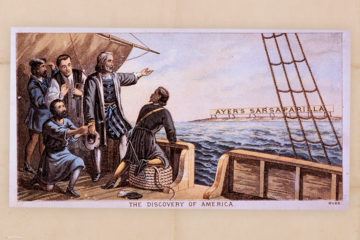 When European naturalists explored the plants of the New World in the sixteenth century, they tended to relate new species to better-known plants whenever they could. Sarsaparilla is a case in point. Smilax species found in America were recognized as variants of Smilax aspera and therefore also began to be called sarsaparilla. Nicolás Monardes (1493–1588) described different kinds of American sarsaparilla in his work Historia medicinal de las cosas que se traen de nuestras Indias Occidentales (1565). His descriptions carried a commercial touch. For instance, he tried to convince his readers that the whitish sarsaparilla from Honduras was better than the black variety from Mexico. Similarly, he aimed to embed the new American kinds of sarsaparilla in the traditional framework of European medicine. When American sarsaparilla began to be used in European medicine around 1545, physicians first administered it as a broth to be taken in the morning, the same way as it was used by Native Americans at the time. Monardes, however, argued that it should be given in a syrup, a conventional mode of administration for his European readers.
When European naturalists explored the plants of the New World in the sixteenth century, they tended to relate new species to better-known plants whenever they could. Sarsaparilla is a case in point. Smilax species found in America were recognized as variants of Smilax aspera and therefore also began to be called sarsaparilla. Nicolás Monardes (1493–1588) described different kinds of American sarsaparilla in his work Historia medicinal de las cosas que se traen de nuestras Indias Occidentales (1565). His descriptions carried a commercial touch. For instance, he tried to convince his readers that the whitish sarsaparilla from Honduras was better than the black variety from Mexico. Similarly, he aimed to embed the new American kinds of sarsaparilla in the traditional framework of European medicine. When American sarsaparilla began to be used in European medicine around 1545, physicians first administered it as a broth to be taken in the morning, the same way as it was used by Native Americans at the time. Monardes, however, argued that it should be given in a syrup, a conventional mode of administration for his European readers.
more here.

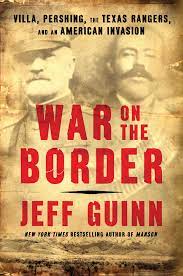 In 1913 and 1914, Mexico suffered under a cruel dictator, Victoriano Huerta, who had gained power by assassinating that nation’s democratically elected president in a U.S.-sanctioned coup. Hoping to restore representative government, four unlikely allies joined forces to defeat Huerta. They called themselves Constitutionalists. The consequences of the Constitutionalists’ victory for both Mexico and the United States are the focus of Texas historian Jeff Guinn’s “
In 1913 and 1914, Mexico suffered under a cruel dictator, Victoriano Huerta, who had gained power by assassinating that nation’s democratically elected president in a U.S.-sanctioned coup. Hoping to restore representative government, four unlikely allies joined forces to defeat Huerta. They called themselves Constitutionalists. The consequences of the Constitutionalists’ victory for both Mexico and the United States are the focus of Texas historian Jeff Guinn’s “